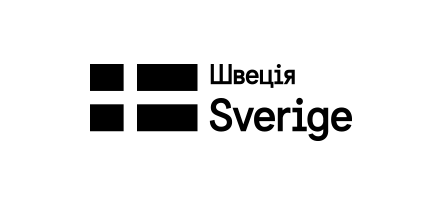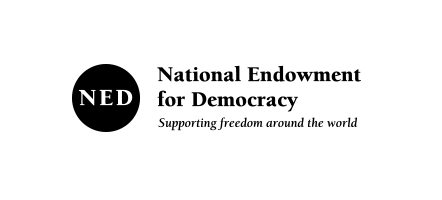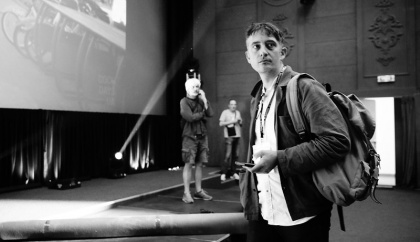
The name of filmmaker Roman Bondarchuk is well known to cinefiles in Ukraine and abroad. He has directed more than 20 documentaries and feature films. In 2016, his film “Ukrainian Sheriffs” was nominated for an Oscar from Ukraine, and in 2019, he received the Taras Shevchenko State Prize for his film “Volcano.” The latter film was screened at international festivals in 46 countries and received 7 prestigious awards. According to film critics, “Volcano” ranked 37-38 in the list of the 100 best Ukrainian films of all time. For many years, Roman Bondarchuk has been the head of the art department of the Docudays UA International Human Rights Documentary Film Festival, and after the outbreak of full-scale war, he co-founded the “War Archive,” a platform that collects and organizes a database of video and audio materials about the war in Ukraine.
Reprinted from ukrinform.ua.
The DOCU/CLUB network, which comprises more than 400 documentary film clubs across Ukraine, invited Roman Bondarchuk to talk about the development of Ukrainian documentary cinema over the past 10 years. What events led to the rapid development of documentary filmmaking in Ukraine? Which film premiere was the most important for the director? And how can archives from our smartphones help researchers document the war and punish the aggressor? Roman Bondarchuk discusses this during a meeting with the audience.
THE MAIDAN WAS A TURNING POINT FOR THE DEVELOPMENT OF UKRAINIAN DOCUMENTARY CINEMA
I remember the days when foreigners used to make documentaries about Ukraine. But their approach to our life was “touristy.” One of my friends worked as a fixer for a German filming crew. A fixer is a person who solves all administrative issues, finds characters and protagonists, and negotiates with them for permission to film. She showed me a script where five drunken sailors with a balalaika were supposed to walk down the street and sing something like “Kalinka-Malinka.” The action took place somewhere in Vinnytsia, where there is no sea and, accordingly, no sailors. When we suggested that the filming crew come up with something else, they said, “No, no, we have a big TV channel, it's very difficult to re-approve the script, and this one has been approved, so find us five sailors.” We had to negotiate with some villagers, dress them in vestments, color the water to make it look like moonshine, and have them sing “Kalinka-Malinka.” Such films satisfied the stereotype of foreigners about Ukraine.
In the Docudays UA festival program, the first major film that reflected Ukrainian reality was “The Other Chelsea,” a 2012 film by the German director Jakob Press. It was a film about the secretary of the Donetsk City Council (Mykola Levchenko – ed. note), a man close to Yanukovych who led a luxurious lifestyle, rode motorcycles around Donetsk, went to the hairdresser and nail salon during working hours, happily shared this and told the director how good his life was. Opening the festival with this film was actually a very brave step for the director and for us, because in 2012, freedom of speech and other freedoms were not yet the same as after the Maidan. At our opening, there were a lot of people in civilian clothes documenting and recording everything, and the atmosphere was quite ominous. But it seems to me that we somehow managed to overcome the fear, and the journalists who attended the opening wrote about “The Other Chelsea.” I hope that, with this unveiling, we at least helped to make this official a meme at the time.
Another “touristy” film I remember 2015 was “The DNR, or the Curious Tale of the Handmade Country” about DNR separatists. By that time, we already had award-winning Ukrainian films, and the subjectivity of the Ukrainian view was actively being formed. Since 2015, Ukrainian films made by our directors have dominated the festival.
Of course, the Maidan was the turning point. It was the moment when everyone who could film went out to document the protest. Everyone tried to make their own film. At that moment, many filmmakers and entire associations, like Babylon'13, were born. After 2014, Ukrainian films regularly won prizes and appeared on major international platforms, reflecting on this revolution, the Russian invasion of the Ukrainian East, and the post-traumatic disorders of Ukrainians. This wave, which began in 2013-14, continues to this day.
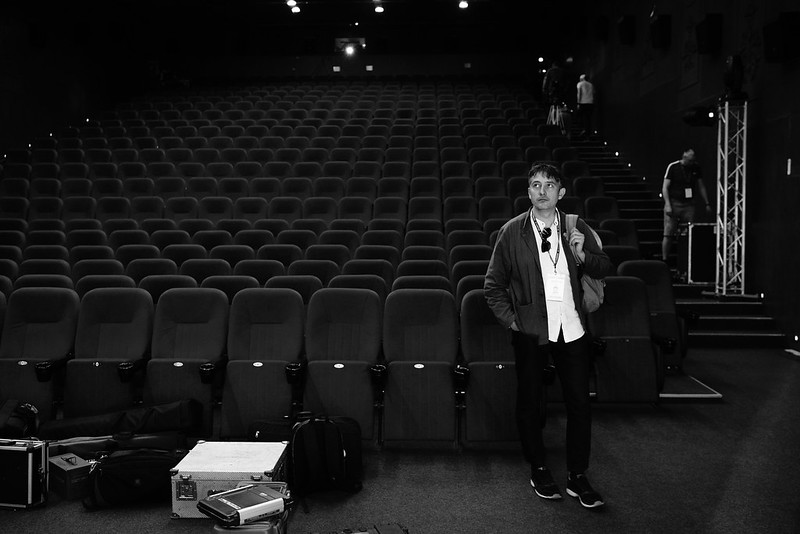
Roman Bondarchuk.
“’EUROMAIDAN. ROUGH CUT’ WAS THE MOST IMPORTANT PREMIERE IN MY LIFE”
It all started when the Docudays festival finally rented an office. With the beginning of the Maidan, many foreign companies fled Kyiv, and there were a lot of unoccupied premises rented out at a very low price. So we found an apartment 50 meters from the Maidan, on Mala Zhytomyrska Street. We moved in when the Maidan was still standing, after the students had been beaten, but the protest was still peaceful. We didn't have any furniture, so we brought some cots, futons, sleeping bags, and dishes. Numerous journalists and filmmakers from different countries called us and asked if they could stay somewhere to see what was really going on. We told them they could stay on the floor of our new office. So it turned into a hub, where journalists and reporters were always hanging out, and sometimes protesters or friends of friends would come in for tea, warm up, and leave again. Many of my colleagues were uploading the material and editing it on their laptops in the corners of the office. It was very active for three months, and then the Maidan prevailed.
There were a couple of weeks left before the festival, and we didn't know if we would have time to prepare for it. There was so much energy, so much desire to throw out all this experience and emotions that everyone had gone through. I, Dariya Averchenko, and Yuliya Serdyukova decided to collect some footage from people who were somehow involved in the office, whom we knew, or whom we met on the square itself, so that they could share with us one or two episodes of footage that they considered successful. Colleagues sent their footage, and I watched them in the office, sometimes cutting them. We thought about the sequence and the intertitles between these episodes. The idea was to make it as simple as possible. Everyone realized that this was not the end. It was not clear what would happen next to Crimea and to the east of the country. These were moments of euphoria after Yanukovych's escape. We decided to name the film “Euromaidan. Rough Cut” because we realized that it could still take other forms and be edited later. We screened this film straight from the editing program, without even having the opportunity to watch it ourselves and make sure that everything is being played correctly. We just assembled everything, put it together, and screened it. The ceremony was hosted by Natalka Humeniuk, and Mariana Sadovska sang “Plyve Kacha” at the final credits. The audience gave a standing ovation, and it was an extremely powerful moment of unity for everyone present.
For me, it was probably the most important premiere in my life, even though it is a collective film, since many authors worked on it. Most of these authors later made their own shorter or longer films. “Euromaidan. Rough Cut” traveled a lot around the world, telling foreigners about what we actually experienced, what it looked like from the inside. It also gave us the opportunity to speak out, to confront Russian propaganda and explain what was happening here.
A year later, me and my friend, filmmaker Serhiy Lysenko, made an almanac called “Encyclopedia of the Maidan.” It was born out of a desire to record the processes of civic engagement on the Maidan that simply amazed the whole world: our ability to organize ourselves and the bright initiatives and charismatic leaders that emerged to lead the way.
I remember sitting with Serhiy, writing down the topics and characters we would like to film. The list was endless. Now I look at it and realize that we were filming the first public steps of these people and initiatives, and it's fantastic that we were able to talk to them then and show them where they came from. For example, Euromaidan SOS, which, in fact, emerged from the Center for Civil Liberties. Or the White Collar Hundred, which turned into Bihus.Info and continues to expose corruption and clan ties in our country.
There are some things that look ridiculous now. For example, the almanac has an episode about bloggers. At that time, this phenomenon had just emerged and was something that helped to resist propaganda. These people were becoming full-fledged sources of information. It was amazing, and I wanted to film and show them too. Some initiatives, such as Automaidan, have served their purpose and ended organically. But they remained in history. I think this collection was worth making. It is interesting to look back on it now.
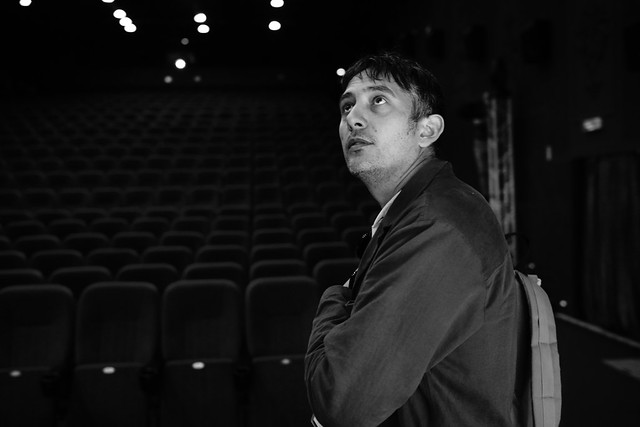
Roman Bondarchuk.
“IN ‘UKRAINIAN SHERIFFS,’ I WANTED TO TELL ABOUT COMMUNITY SELF-ORGANIZATION, BUT IT TURNED OUT TO BE SOMETHING DEEPER”
Documentaries are interesting because of their unpredictability. First, I met Viktor Marunyak, the head of the village of Stara Zburyivka, and made a short film about him. He told me about the sheriffs. It was something unexpected for the Kherson region. The sheriffs immediately struck me with their yellow car and movie-hero posture. Dasha Averchenko, the producer of this film, and I joked that Viktor Hryhorovych looked like Chuck Norris, and his partner Volodya resembled Tony Soprano. I thought that now we will tell the whole world this easy-to-watch, ironical story about sheriffs who were able to improve the situation with public order in a remote village. We thought it would be a documentary comedy, and that we could shoot it in a month. But “Ukrainian Sheriffs” took three and a half years of my life – from the idea to the premiere.
The sheriffs thought that the film won’t be good if it takes me so long to make. Then, they got tired of giving interviews and talking. They would try to sneak outside without a camera. In the end, I’d jump into the car with them without permission. Then they felt that they also had some advantages with the camera behind them - more legitimacy and officialdom. We had a lot to talk about, and gradually I, Dariya Averchenko, and Borya Peter became the residents of Stara Zburyivka, and the sheriffs became the characters of the film.
I planned to show the life of a southern Ukrainian village that is practically deprived of police assistance. If the villagers called the police, the officers would either not come or not work properly, bringing more problems than help.
We wanted to show an example of self-organization, but it turned out to be something deeper. The Maidan began, then the annexation of Crimea, then the war in the east, and the sheriffs acquired more chores and responsibilities: they delivered summonses, buried people, and dug graves. All this reality also appeared in the film, and it became a document of the beginning of the war. Later, it was included in the manuals for the reform of the National Police and shown to new police officers as a visual aid to how law and order works in small communities and how to work with it and prevent violations. Then came the Sheriffs for New Communities program, which encouraged people to become sheriffs. Officially, the position was called "public assistant district inspector" for some time, but they were all called sheriffs unofficially, and if a person had certain skills, he or she could even get paid for it. That is, the film had a great impact even after it was released.
Today, Stara Zburyivka is occupied. Viktor Marunyak stayed in the village after the full-scale invasion. He was captured by the Russians, beaten twice, tortured, and then kept in a pre-trial detention center in Kherson. When he was released after some time with an obligation not to leave the village, he realized that he had to escape, and he and his wife left. One of the film's protagonists, Viktor Hryhorovych, also had a very difficult story during the occupation. His house was destroyed, and the Russians were looking for him because he was in the ATO and then worked as a sheriff. Hryhorovych was hiding in a cemetery for a long time, until he finally managed to get through enemy checkpoints to the Ukrainian government-controlled territory. Now it is difficult for us to keep in touch because of his displacement, but after such a long time together, we have remained friends.
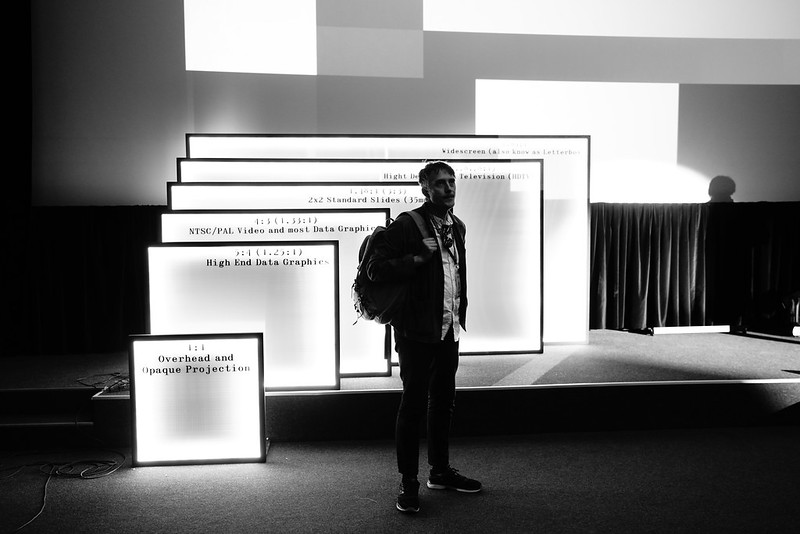
Roman Bondarchuk.
THE WAR ARCHIVE IS MY MISSION AT THIS POINT
When the full-scale invasion began, our work chat was immediately flooded with personal videos of people witnessing it all. The Facebook feed was full of streams of Russians entering, helicopters flying, people hiding in the bathroom or in the corridor under the table. I asked all my colleagues to keep these materials and, at the same time, started thinking about ways to organize them more systematically. It was already clear that this time the amount of information would be immense, and it had to be structured at once so that it could be used for research, or even better, to identify those responsible for war crimes.
Some time later, in March, we got on the phone with a university friend of mine who is involved in IT development and started thinking together about how to organize the search, structure, and protection of this data. Heand his company Infoscope took over the software part, and we, the Docudays team, partially took over the analytical part. This means we are looking for partners and invite them to share their materials. We have a team that watches videos and assigns keywords to them. We have a team of documentary filmmakers who travel to the liberated territories, talk to people there and record in-depth interviews about their experiences. They talk not only about the war crimes they experienced, but also some very simple everyday things that will be important as a document of history.
I do not think this is something radically different from documentary filmmaking. Many people have doubts: what's so important here, someone else lived through a real tragedy, and I just spent a week in the basement. But I believe this material is valuable for history and research. We do our best to ensure that no one can rewrite, change, erase, or destroy it. By analyzing and assigning keywords, we want to ensure that as many matches as possible can be found in a search query, and that it will be easier for researchers, analysts, and lawyers to work with this material and document this war. In the future, this work may result in a large digital museum where you can hear and find most of the stories that happened, most of what we are experiencing now. I urge everyone to share everything, even the stuff that seems not very important to you, because smartphones often get damaged, and these materials should live on and testify against the aggressor. We have a telegram bot, we have a website, and we have people who update this archive. Please share, because smartphones often get damaged, and these materials must live on and testify against the aggressor.
It just so happens that part of the team recording the interviews are also documentary filmmakers, and they are, of course, interested in making the collected testimonies part of the information field and telling about our people and their spirit. I was personally deeply impressed by this film “Witnesses.” In it, a pensioner, a resident of the Kyiv region who has never seen an operating fire truck, finds one somewhere, gets in and goes to put out a fire. Or, for instance, a boat transports provisions to Ukrainian soldiers who are surrounded. The ease with which they tell and do it is truly amazing. Listening to them, I realized that these people are invincible in principle. The team is inspired, they plan to continue making “Witnesses,” and it will be a series of short films from different parts of Ukraine about different episodes of this war.
Author: Olha Babchuk.
Photo by Valentyn Kuzan for Docudays UA.
The development of the DOCU/CLUB Network is funded by the United States Agency for International Development (USAID), the Embassy of Sweden in Ukraine, the National Endowment for Democracy (NED) and Fondation de France.
The opinions, conclusions, or recommendations are those of the authors and compilers of this publication and do not necessarily reflect the views of the governments or charitable organizations of these countries.The authors and compilers are solely responsible for the content of this publication.
All news
